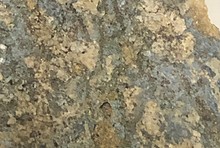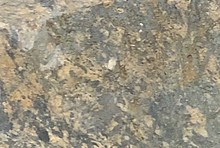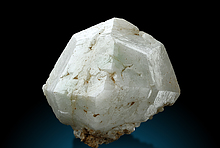Home PageAbout MindatThe Mindat ManualHistory of MindatCopyright StatusWho We AreContact UsAdvertise on Mindat
Donate to MindatCorporate SponsorshipSponsor a PageSponsored PagesMindat AdvertisersAdvertise on Mindat
Learning CenterWhat is a mineral?The most common minerals on earthInformation for EducatorsMindat ArticlesThe ElementsThe Rock H. Currier Digital LibraryGeologic Time
Minerals by PropertiesMinerals by ChemistryAdvanced Locality SearchRandom MineralRandom LocalitySearch by minIDLocalities Near MeSearch ArticlesSearch GlossaryMore Search Options
The Mindat ManualAdd a New PhotoRate PhotosLocality Edit ReportCoordinate Completion ReportAdd Glossary Item
Mining CompaniesStatisticsUsersMineral MuseumsClubs & OrganizationsMineral Shows & EventsThe Mindat DirectoryDevice SettingsThe Mineral Quiz
Photo SearchPhoto GalleriesSearch by ColorNew Photos TodayNew Photos YesterdayMembers' Photo GalleriesPast Photo of the Day GalleryPhotography
╳Discussions
💬 Home🔎 Search📅 LatestGroups
EducationOpen discussion area.Fakes & FraudsOpen discussion area.Field CollectingOpen discussion area.FossilsOpen discussion area.Gems and GemologyOpen discussion area.GeneralOpen discussion area.How to ContributeOpen discussion area.Identity HelpOpen discussion area.Improving Mindat.orgOpen discussion area.LocalitiesOpen discussion area.Lost and Stolen SpecimensOpen discussion area.MarketplaceOpen discussion area.MeteoritesOpen discussion area.Mindat ProductsOpen discussion area.Mineral ExchangesOpen discussion area.Mineral PhotographyOpen discussion area.Mineral ShowsOpen discussion area.Mineralogical ClassificationOpen discussion area.Mineralogy CourseOpen discussion area.MineralsOpen discussion area.Minerals and MuseumsOpen discussion area.PhotosOpen discussion area.Techniques for CollectorsOpen discussion area.The Rock H. Currier Digital LibraryOpen discussion area.UV MineralsOpen discussion area.Recent Images in Discussions
Improving Mindat.orgQuestionable Rhodostannite
26th Mar 2010 08:46 UTCKeith Compton 🌟 Manager
First I would like to question the validity of the following Rhodostannite specimens:
262006; 247200; 261298; and 247201
In additon, I question the stated field of view in each - in one case (photo 262006) the stated field of view is 1.1 mm ..... now that is much smaller than the copyright symbol underneath the photo - Perhaps the field of view should be 1.1 CM. The photos do not look like they have been taken through a microscope etc, which is what would be needed for this field of view.
Similarly with photos 247200 (1.8mm) photo 261298 2.2. mm and photo 247201 (1.8mm)
Secondly the xl system appears to contradict the stated crystalography of Rhodostannite. As I have stated on other forums and in other messages - I am not a crystallographic expert by any means- but they just don't look correct to me, based on what I have read on this mineral. If they are then perhaps somone can explain it too me.
In each case I think that the Rhodostannites look more like micro Galena xls.
If one of these collectors could provide some form of positive ID (other than a visual id), or if some other mineral expert can explain how they are in fact Rhodostannite, then I am very happy to stand corrected - but visually they just don't seem right.
If I am wrong I apologise unreservedly in advance.
Over to the experts ...
Cheers

26th Mar 2010 10:58 UTCLefteris Rantos Expert
Concerning the xl sizes and fields of view, I can confirm they ARE tiny and the FOV's (1.1mm, 1.8mm etc.) are probably correct - these are microphotographs. I have a similar specimen, and the xls are really that small, perched on large Andorite xls.
Concerning the ID, I can't say much as I have never seen a real analysis for any of these.
I only have to comment that I have seen such specimens labelled as "Ferrokesterite" at least once. Ferrokesterite and Rhodostannite have very close chemistry and should appear similar (if not almost identical) visually.
Is there any detailed and reliable analysis to prove this ID??
Lefteris.
26th Mar 2010 11:13 UTCKeith Compton 🌟 Manager
Surely field of view refers to the whole picture not the xls themselves
Cheers
26th Mar 2010 12:49 UTCJeff Weissman Expert

26th Mar 2010 12:58 UTCDavid K. Joyce Expert

26th Mar 2010 17:38 UTCAlfredo Petrov Manager

26th Mar 2010 20:02 UTCMarko Burkhardt Expert
The field of view in picture 262006 is really 1.1mm (+/-0.1mm) and not cm! Yes, the resolution is better than the ones of normal microscopes, because this photo is taken by using a bellows and very special objectives.
I contacted the seller of this specimen for more information about analysis. Perhaps he can tell more.
Maybe the photo is a little bit to blue. I will try to change this by using other lighting technologies in the future.
Marko
26th Mar 2010 21:29 UTCKeith Compton 🌟 Manager
Thanks for that
and thanks Marko for confiming the field of view - well done on the pics in that case.
Still not sure how tetragonal gets to look like octahedral but will do more research on this
Cheers

26th Mar 2010 22:12 UTCDavid K. Joyce Expert
Rhodostannite crystallizes in the tetragonal system. There are simple forms in the tetragonal system that can look very much like isometric forms. Tetragonal prisms terminated by the pinacoid can look very much like cubes, if their length to width ratio is similar. As well, tetragonal pyramids with low angles can look very much like octahedra. Have a look in an old Dana Text or book on crystallography and you'll see lots of example of tetragonal crystals that appear isometric, at first glance.
The thing with the rhodostannites is that they look like octahedra but are really pyramids. Some of them even look like cube-octahedra because some of the points of the "octahedron" are truncated by the pinacoid. The thing is, though that only TWO points, at opposite ends are ever truncated by a pinacoid in the tetragonal system. That is what you see with rhodostannite. In the isometric system, all of the points would be or could be truncated by similar-looking faces. In the isometric system it would be the cube truncating the octahedral points.
Does that help, at all?
David K. Joyce
26th Mar 2010 22:23 UTCGerhard Niklasch Expert
Several examples in the Rhodostannite gallery appear to show basal pinacoids in more than one axis direction, just like the representative picture on the Cumengeite page shows intersecting dipyramids along all three axes. For comparison, an untwinned truncated dipyramid of Cumengeite looks like this.
Cheers, Gerhard

26th Mar 2010 22:54 UTCDavid K. Joyce Expert

24th Jun 2012 21:06 UTCMarko Burkhardt Expert
S: 54%
Cu: 16,6%
Fe: 8%
Sn: 21%
I guess it really is Rhodostannite.
Any other opinion?
24th Jun 2012 22:04 UTCRob Woodside 🌟 Manager




Mindat.org is an outreach project of the Hudson Institute of Mineralogy, a 501(c)(3) not-for-profit organization.
Copyright © mindat.org and the Hudson Institute of Mineralogy 1993-2024, except where stated. Most political location boundaries are © OpenStreetMap contributors. Mindat.org relies on the contributions of thousands of members and supporters. Founded in 2000 by Jolyon Ralph.
Privacy Policy - Terms & Conditions - Contact Us / DMCA issues - Report a bug/vulnerability Current server date and time: April 23, 2024 07:53:38
Copyright © mindat.org and the Hudson Institute of Mineralogy 1993-2024, except where stated. Most political location boundaries are © OpenStreetMap contributors. Mindat.org relies on the contributions of thousands of members and supporters. Founded in 2000 by Jolyon Ralph.
Privacy Policy - Terms & Conditions - Contact Us / DMCA issues - Report a bug/vulnerability Current server date and time: April 23, 2024 07:53:38











